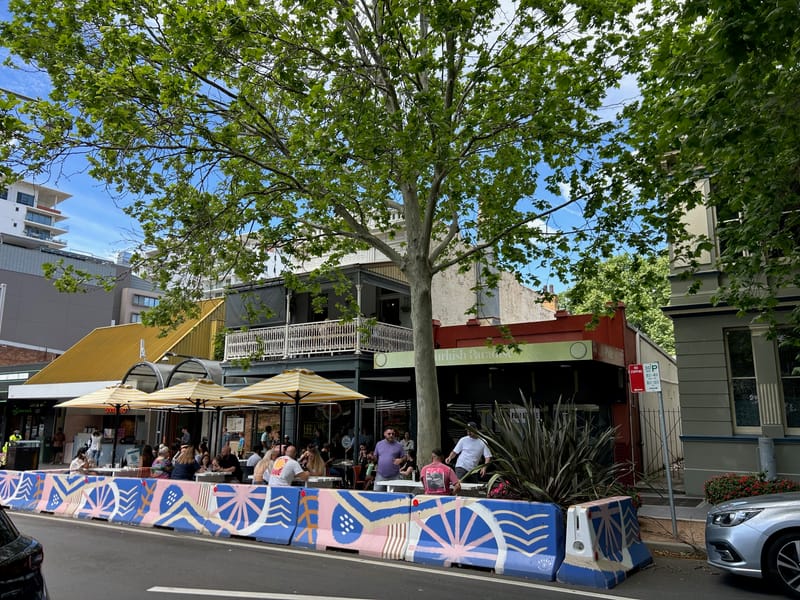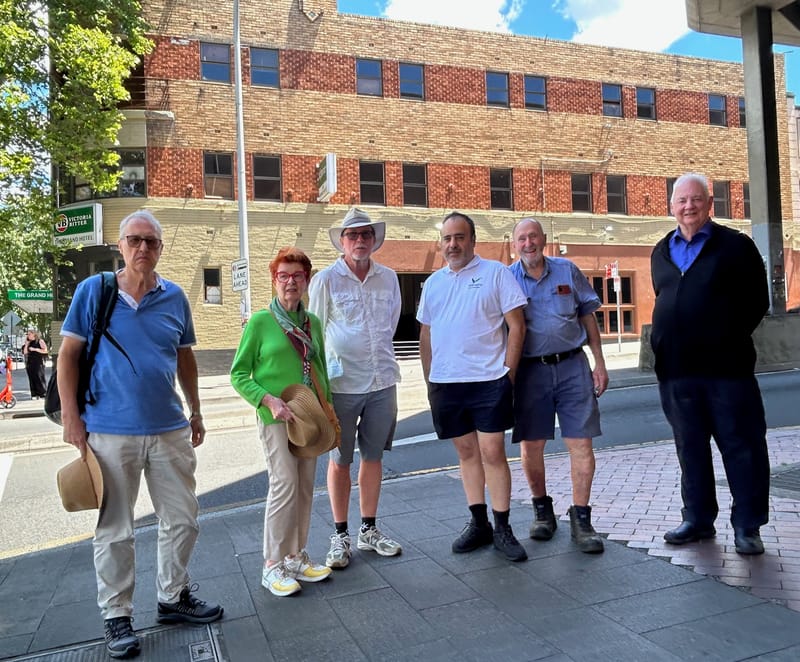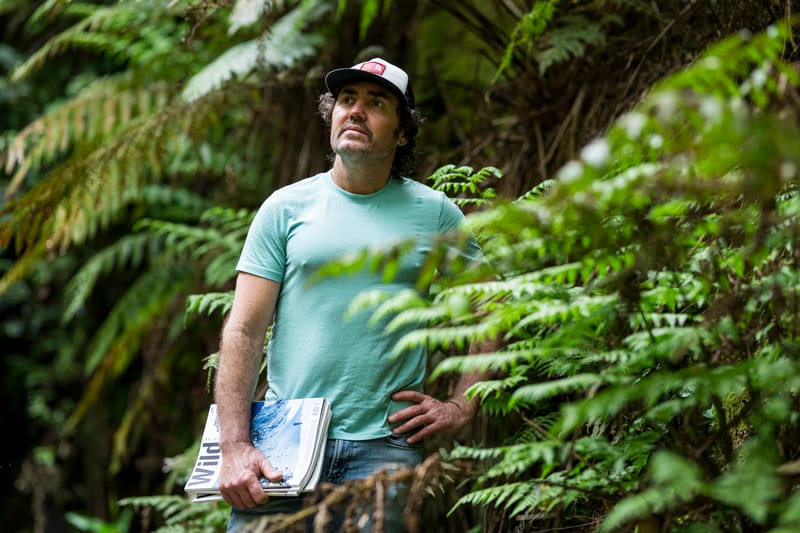Whale death by 'outdated technology' to cost city of innovation a tonne
The juvenile humpback whale that died wrapped in NSW State Government shark nets off the coast of Coledale is set to haunt policy makers long after the public squabble over who should foot the $44,000 bill for the removal of its carcass

The juvenile humpback whale that died wrapped in NSW State Government shark nets off the coast of Coledale is set to haunt policy makers long after the public squabble over who should foot the $44,000 bill for the removal of its carcass.
Ahead of Monday’s Wollongong City Council meeting, a question from Ward 1 Greens Councillor Jess Whittaker revealed the financial cost to ratepayers after the carcass washed ashore at Scarborough on October 28.
“Landowners / Land managers are responsible for managing Marine carcasses that wash ashore in NSW,” council staff wrote in reply.
Most of the $44,043.43 total went to specialist salvage contractors AVCON, who used jet skis, marine equipment, excavators and bins to shift the carcass to council's Whytes Gully tip at Kembla Grange.
“This task not only required specialist staff and equipment but was complex and high risk in nature with the carcass shifting on a slippery rock shelf, wave movement, tidal conditions and the presence of multiple sharks in the nearby vicinity,” council reported.
Last week – after a necropsy showed the whale was a 4.66-tonne juvenile male aged about 12 to 14 months – a Taronga spokesperson told the Flame: “Preliminary findings indicate the most likely cause of death was drowning from entanglement in shark netting.”
WCC’s General Manager wrote to NSW Agriculture Minister Tara Moriarty, seeking funds to cover costs.


In its report on the retrieval operation, AVCON said, "The key was to remove the whale from the water as soon as possible to remove the local threat caused by the many large sharks feeding on the whale." Photos: AVCON
Program in spotlight, net costs unclear
Carcass removal is a drop in the ocean of government funding that flows annually into the NSW Department of Primary Industries and Regional Development's Shark Management Program (SMP), which will cost $21.4 million in 2025/26.
Yet spending visibility is poor.
The Illawarra Flame asked how much money was allocated to aspects of the program, which includes nets, drumlines, acoustic tracking, drones and the SharkSmart app.
The NSW Department of Primary Industries and Regional NSW did not answer this question. Instead a spokesperson described the program – which last season entangled 199 "non-target" animals, including 28 Southern Eagle Rays, 7 Green Turtles and 3 Indo-Pacific Bottlenose Dolphins – as “the most comprehensive, evidence-based program in the world”.
“This funding covers a range of initiatives and is delivered as a package,” the spokesperson said.
“The Shark Program funding is subject to decisions made by NSW Cabinet and and the Government is always looking to new research, trials and technologies that will reduce interactions of swimmers and surfers with sharks.”


Where the netted beaches are in NSW and Wollongong. Source: NSW Government
Whale's death triggers public interest in wildlife cost
In contrast to the murky waters of program funding, the cost to marine life is meticulously catalogued each year as part of the Shark Meshing (Bather Protection) Program Annual Performance Report.
In 2024/25’s publication, the report’s editors, who are also study authors cited in the reference section, delve deep into data, sharing everything from big picture to hyper-local records.
“A total of 223 marine animals were caught in the SMP during the 2024/25 meshing season, comprised of 24 target sharks and 199 non-target animals. Seventy-four animals (33%) were released alive,” the report reads.
Tables capture the date and location of each animal netted, its size, sex and whether it was dead or alive. For example, Thirroul nets caught 2 Bronze Whalers, 1 Broadnose Sevengill Shark, 1 Eastern Shovelnose Ray, 2 whaler sharks (decomposed, species unknown), 4 Southern Eagle Rays, and 1 Dusky Whaler. All except the Smooth Stingray were found dead.
In the Royal National Park, Wattamolla nets killed two threatened species – a Green Turtle and a White Shark – as well as two dolphins and a female Shortfin Mako.
“The shark nets kill hundreds of animals every year,” said Dr Leah Gibbs, an Associate Professor in Geography & Sustainability at the University of Wollongong. “The vast majority of them pose no threat to people.
“The shark nets are designed to keep people safe from shark bite, but there is no convincing evidence that they are effective.”
In 2020, Leah was one of the authors of a paper titled Effects and effectiveness of lethal shark hazard management: The Shark Meshing (Bather Protection) Program, NSW, Australia that was published in the British Ecological Society’s People and Nature journal.
“The shark nets are 150m long and 6m deep, set within 500m of shore, at beaches that can be 1km long, in water up to 12m deep. So the nets are a fishing device, not a barrier,” she said.
“Very few shark bites have occurred since the nets were introduced in 1937, but that time period also corresponds with the introduction of Surf Life Saving and Lifeguards at NSW beaches. Careful observation of beach conditions is what keeps people safe from all sorts of hazards.”


Dr Leah Gibbs is an author of a paper titled Effects and effectiveness of lethal shark hazard management: The Shark Meshing (Bather Protection) Program, NSW, Australia
'Outdated technology, that comes from outdated thinking'
When it comes to funding bather protection, Leah, who has been researching human-shark interactions for over a decade, would like to see people protected by a mix of modern approaches.
“This has been such a tragic case – a humpback whale calf killed by the NSW government’s shark nets," she said.
"It is time to take them out of the water. They are an old and outdated technology, that comes from outdated thinking,”
“There are always risks associated with entering the water. Instead, we need to adopt a kind of patchwork approach: a combination of knowledge, practice, and technologies. Our Lifeguards and Surf Life Savers are exceptional. They keep an eye on all sorts of beach hazards – not just the presence of sharks, but schooling fish, as well as much more common problems like rips and accidents.
"Drones can provide an additional view from the air, which can help Lifeguards. Ocean-users can adopt sensible practice, by paying attention to advice and drawing on their own knowledge of ocean conditions.
“Other technologies are also being trialled, including observation and personal deterrents. This is an exciting space for innovation.”

What the state's $21.4m shark program covers in 2025/26
A NSW Department of Primary Industries and Regional NSW spokesperson said the government's $21.4 million Shark Management Program covers six areas:
- 305 SMART (Shark Management Alert in Real Time) drumlines in 19 local government areas year-round. Target sharks hooked are tagged and released
- Shark nets at 51 beaches between Newcastle and Wollongong, deployed 1 September to 31 March
- Drone surveillance by Surf Life Saving NSW at up to 50 beaches
- Tracking the movements of tagged sharks via 37 tagged shark listening stations, including at Stanwell Park and Wollongong City Beach
- Surfing NSW partnership to provide shark mitigation supports and services, such as trauma kits, drones and training
- The SharkSmart app, community awareness and education campaign.





